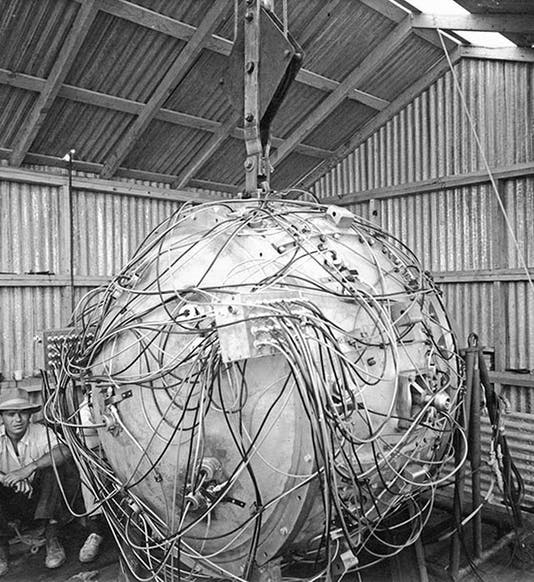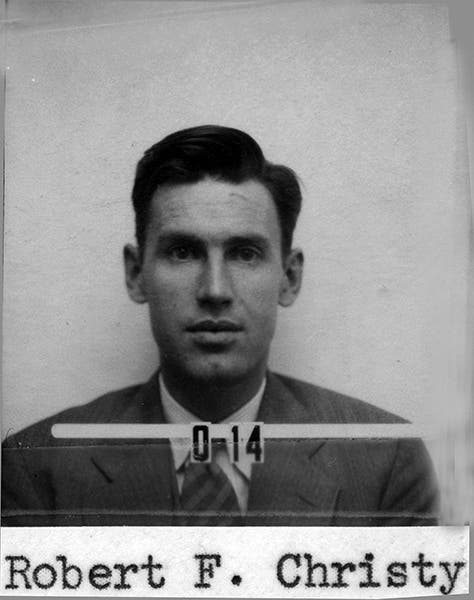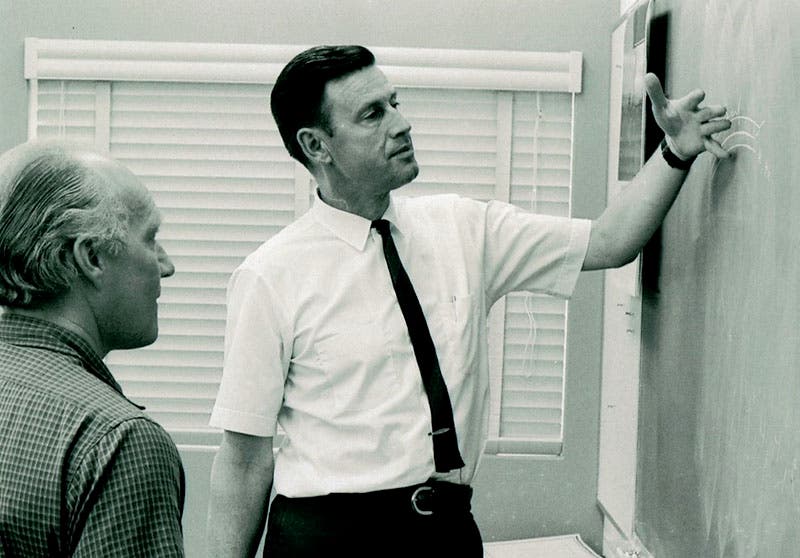Scientist of the Day - Robert Christy
On July 16, 1945, at 5:29 in the morning, the world's first nuclear device was detonated at a site called "Trinity" in New Mexico; the nuclear age, for better or for worse, was upon us. There are many people who could be credited for the success of the Trinity Gadget, as it was called, beginning with Robert Oppenheimer and General Leslie Groves and including Enrico Fermi, Hans Bethe, and many others. Today we choose to focus our attention on Robert Christy, who came up with the design for the Trinity Gadget.
The Manhattan Project at Los Alamos was responsible for designing two kinds of nuclear weapons – one using uranium 235, and the other plutonium 239. The uranium bomb used a fairly simple design – a long thin, gun-like construction in which a sub-critical mass of uranium was "shot" into another sub-critical mass at high speed, producing a critical mass and a runaway nuclear reaction. The plutonium bomb design was a bit trickier. Plutonium will fission so readily that a gun-style detonator will not work, as a chain reaction would begin long before the initiator "bullet" penetrated very far, and the reaction would fizzle. A different design was required.
It was Robert Christy who figured out how to explode a plutonium device. Christy was a Canadian physicist who came to the University of California - Berkeley in the late 1930s to study under Oppenheimer. In 1942, he was recruited by Fermi to help build the first atomic pile at the University of Chicago, and he was subsequently brought by Oppenheimer to Los Alamos to work on the Manhattan Project. Christy was a theoretical nuclear physicist, like Oppenheimer, and when others suggested that a hollow plutonium shell could be imploded into a critical mass, it was theory that told Christy that such a device would not work. Instead, he proposed that the plutonium should be molded into a solid sphere (actually, two hemispheres, for safety reasons), with only a tiny hole at the center for the initiator. The sphere as originally fabricated would be sub-critical.
The plutonium sub-critical sphere would then surrounded by a much larger sphere of explosives. The explosives would be carefully shaped into what were called “lenses” so that, when detonated simultaneously, they would almost instantly compress the plutonium sphere to a critical mass, initiating an explosive nuclear reaction. A radioactive initiator at the center (the “urchin”) would ensure a supply of neutrons to trigger the reaction.
The first plutonium gadget, exploded at Trinity, worked exactly as Christy predicted. A second one just like it was enclosed in a bomb casing, nicknamed Fat Man, and dropped on Nagasaki, Japan, on Aug. 9, 1945 (third image). The solid plutonium core design was named the "Christy pit" (pit in the sense of peach pit), and the term is still in use (fourth image).
Christy was hired by Cal Tech after the War to replace Oppenheimer, and he spent the rest of his career there, turning his attention to now nuclear energy works in stars. He died in 2012 at the age of 96, one of the very last of the Manhattan Project physicists.
Dr. William B. Ashworth, Jr., Consultant for the History of Science, Linda Hall Library and Associate Professor, Department of History, University of Missouri-Kansas City. Comments or corrections are welcome; please direct to ashworthw@umkc.edu.










